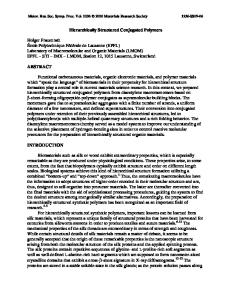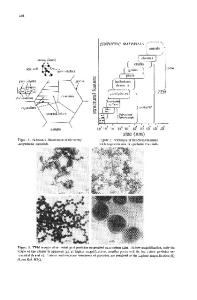Hierarchically structured carbon nanomaterials for electrochemical energy storage applications
- PDF / 1,676,303 Bytes
- 16 Pages / 584.957 x 782.986 pts Page_size
- 87 Downloads / 546 Views
Xiaoliang Yub) Center for Green Research on Energy and Environmental Materials, National Institute for Materials Science, Tsukuba 305-0047, Japan
Baohua Li, Feiyu Kang, and Yan-Bing Hea) Generation Power and Energy Storage Batteries, and Engineering Laboratory for Functionalized Carbon Materials, Graduate School at Shenzhen, Tsinghua University, Shenzhen 518055, China (Received 30 September 2017; accepted 27 November 2017)
Structural hierarchy is ubiquitous in nature and quite important for optimizing the properties of functional materials. Carbon nanomaterials, owing to their unique and tunable physical and chemical properties, have been regarded as promising candidates for various energy storage systems. Constructing hierarchically structured carbon nanomaterials (HSCNs) can boost electrochemical performance of nanocarbons. Therefore, HSCNs have attracted tremendous research attentions in recent years. In this review, we summarized the recent progress in hierarchical structure design of carbon nanomaterials and their potential applications in different energy storage technologies. First we give a brief introduction about carbon nanomaterials and the hierarchical structure merits. Subsequently, recent research works on hierarchical structure design of carbon nanomaterials was summarized and classified according to applications in lithium-ion batteries, sodium-ion batteries, supercapacitors and lithium–sulfur batteries, respectively. In addition, the challenges of HSCNs in different applications were also concluded and reviewed. At last, design principles of HSCNs were summarized and future development trends were prospected. I. INTRODUCTION
Carbon, often referred to as ‘king of the elements’, has attracted tremendous research attentions.1 Graphite, diamond, and amorphous carbon are the three best known carbon materials.2 The physical and chemical properties of carbon materials vary widely with carbon bonding forms, for example, the well-known sp2 and sp3 hybridization.2–4 According to dimensionalities, nano-sized carbons with sp2 hybridization structure can be classified into zero, one and two dimensional (0D, 1D, and 2D) carbon nanomaterials.3 The most classical representative of 0D nanocarbons is fullerene (C60), which was discovered in 1985 and was awarded the Nobel Prize in 1996.5 The discovery of C60 has created a new branch of carbon chemistry. Carbon nanotube is a typical representative of 1D nanocarbon, and it was discovered in 1991 by Iijima.6 Carbon nanotubes consist of carbon hexagons arranged in
Contributing Editor: Tianyu Liu a) Address all correspondence to this author. e-mail: [email protected] b) These authors contributed equally to this work. DOI: 10.1557/jmr.2017.464
a concentric manner with both ends often capped by fullerene-like hemispheres. Graphene, a perfect 2D nanocarbon, which can be regarded as a single-atom-thick carbon nanosheet, was first isolated from graphite by Geim AK and his co-workers in 2004, and this discovery won the 2010 Noble Prize in Physics.7 The discoveries
Data Loading...











